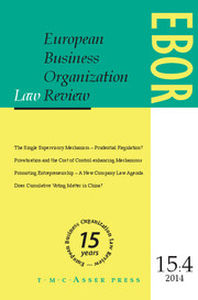Article contents
Changing Remuneration Systems in Europe and the United States – A Legal Analysis of Recent Developments in the Wake of the Financial Crisis
Published online by Cambridge University Press: 28 July 2010
Abstract
The question of how to optimise corporate governance with regard to the structure of remuneration systems and, particularly, executive compensation is presently more hotly debated than ever. Since flawed executive pay structures are considered to have contributed to the financial crisis by encouraging short-term risk-taking at the expense of long-term security, remuneration systems are re-evaluated at national, European and international level. The analysis of current regulatory and legislative reform initiatives of selected countries in Europe (United Kingdom, Switzerland and Germany) and the United States shows the fundamental common objective to sustain market confidence and promote financial stability by removing incentives for inappropriate risk-taking by firms. The internationally emerging remuneration model strives to ensure, to the widest extent possible, congruency between incentives and risks. The need for firms to concentrate on long-term rather than short-term performance is a recurring theme of the reform movement. However, a closer look at the different national regulatory and legislative initiatives reveals that the structural approaches to how to design a well-balanced remuneration system vary significantly as to the scope of application and the intensity and detail of the new regulation and legislation.
- Type
- Articles
- Information
- Copyright
- Copyright © T.M.C. Asser Press and the Authors 2010
- 5
- Cited by


